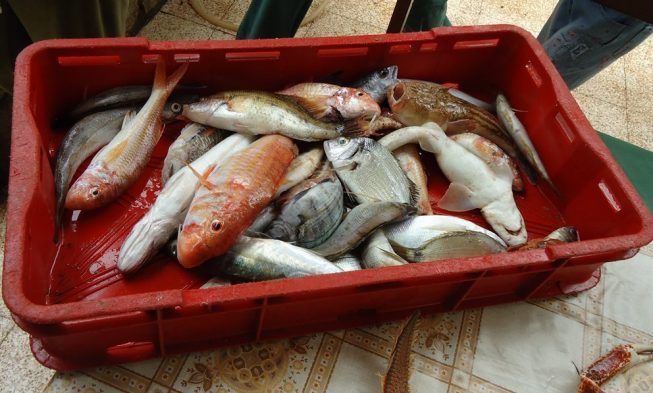
Croatian fish
Srdela (Pilchard) – small pelagic fish. Belongs to the Clupeidae family. It is the most important fish in the Adriatic sea fishing. She lives in the small and large flocks and she is very small fish which can’t grow longer than 21 centimeters and weight more than 0.06 kilograms. The greatest catch of sardine is in the area of the island of Mljet, Lastovo, Vis, and Dugi otok. On the upper half of the body she has blue-green color, while the silvery underside and on each side has a few black spots, which is why she is hardly visible in a daylight. Pilchard is a quick and agile swimmer, and feeds on a variety of planktons and little shrimps in particular.
Papalina (Sprat) – small pelagic fish. Belongs to the Clupeidae family. Her body on the outside looks quite similar to the body of sardine so many people replace them. Sprat is weaker swimmer than other pelagic fish, and feeds on a variety of planktons. She lives in smaller flocks than sardine. Pale greenish-blue color of the ventral side becomes silvery. She is the smallest fish among the small pelagic fish, and she can’t exceed a length of 14 centimeters and weight more than 0.02 kilograms. Most often we can find her in the northern part, from Zadar to Venice. Sprat lives in depths between 15 and 100 meters, but the easiest way to find her is the depth of 30 to 70 meters.
Inćun (Anchovy) – small pelagic fish. Belongs to the Engraulidae family. The longest specimens grows up to 20 centimeters and achieve weight to 0.05 kilograms. Anchovy is a pelagic fish as the only inhabitant of the open sea, and joins the smaller and bigger flocks. He is widespread all across the Adriatic sea to those areas that are deeper than 300 meters. According to the crest, he is dark greenish-blue, and to the belly silvery. His body is more elongated and spindle-shaped, and the head nun. He has a flashy big mouth and lower jaw much shorter than the upper. He feeds with a variety of planktons. The greatest examples of catch anchovies are in the area of Komiža and Dugi otok. Anchovy avoids proximity of other fish, and other fish avoid him, especially sardines.
Šnjur (Horse mackerel) – small pelagic fish. Belongs to the Carangidae family. He grows up to 40 centimeters and 1.8 kilograms. His color is pale greenish-blue, a pale down and has an elongated body, slightly flattened laterally. His head is slightly elongated with elongated lower jaw. Horse mackerel is widespread all across the Adriatic sea, but most of the offshore islands. Sets the maximum depth of 500 meters, but most catches between 80 and 200 meters. It is considered pelagic fish, but a lot depends on the seabed. Most fishing are off the west coast of Istria, near where the lighthouse Blitvenica. Horse mackerel is known as a voracious fish, and he feeds with smaller fish, shellfish, crustaceans and cephalopods.
Tuna (Tunny) – big blue fish. Belongs to the Thunnidae family. She is the most popular fish among big blue fish, and the last 30 years is one of the most popular fish in general. Tunny can grow up to 4 meters and have up to 600 kilograms. Today may be encountered in all areas of the Adriatic sea, regardless of depth and distance from shore. Her color is bluish, almost black, and down and head is lighter. Her body is muscular and strong. She lives in flocks, sometimes more compact, sometimes not, depending on the season and the behavior of fish to feed. Tunny is fed with all types of fish, but the scarcity of these species she eats and the others.
Palamida (Pelamid) – big blue fish. Belongs to the Scomberomoridae family. She grows up to 70 centimeters and 9 kilograms. Her color is dark blue, gray down, and the upper half of body has obliquely lines. She is spread all across the Adriatic sea, but it is more common in southern and central part. The most famous hunting is around Šibenik, Split and Dubrovnik, but also from Zadar until Umag. Pelamid has an elongated spindle-shaped body with a long conical head and large mouth full of tiny sharp teeth. Lives in larger flocks, and feeds on other oily fish, mostly pilchards, sprats, anchovies and small mackerel.
Luc (Little tunny) – big blue fish. Belongs to the Thunnidae family. He grows up to 1 meter and 20 kilograms. His body is spindly and elongated, slightly flattened at the sides, a conical head with a pointed losses. He points his tail fin, which is quite strong and has a crescent shape. The body color from the back side is dark blue with black lines, twisted, his gray flanks are silver, and ventral white crosses in silver with some vague black spots. Holds mainly the offshore islands, and is most common in the islands Šćedro, the western end of the Mljet, the entrance to the town of Vela luka and on the island Biševo. It feeds on small pelagic fish.
Skuša (Mackerel) – small pelagic fish. Belongs to the Scomberidae family. She is cosmopolit, and is biologically more related to tonids and because of the size she incorporates as one of the small pelagic fishes. Her body is similar to the spindle with tapered front and rear fuselage. Mackerel is an excellent swimmer and is very voracious, and feeds on everything that moves in the sea, ranging from tiny plankton and worms, shrimp and fish larvae and small fish. Her color is light blue-green, and down a pale bluish. Along the ridge has an obliquely line. She grows up to 45 centimeters and 0.90 kilograms. She can be found in the Adriatic sea, mostly in the middle of the northern part, near the lighthouse Veli rat on Dugi otok.
Lokarda (Spanish mackerel) – big blue fish. Belongs to the Scomberidae family. Her color is light blue-green and down the lighter, while on the ridge lightly cross-hatched and dotted lines. She grows up to 45 centimeters and 1.10 kilograms. Spanish mackerel is very widespread fish that can be found anywhere in the Adriatic sea. Habitats of Spanish mackerel are consistent with the habitats of sardine. Known hunting is the island of Vis, Dugi otok, Mljet and Premuda, and can be found around the cliffs between island Jabuka, Biševo and Palagruža.
Iglica (Garfish) – small pelagic fish. Belongs to the Scomberesocidae family. She grows up to 80 centimeters and may have up to 1.15 kilograms. Garfish is a real small pelagic fish that is very widespread, regardless of the depth of the sea and the type of bottom, and usually floats on the surface. Known hunting areas are around the island of Vis, Lastovo, Kornati islands, Pag, Lošinj and along the west coast of Istria. Her color is silvery blue-green, and her body is long and narrow, needle-shaped, both jaws are very elongated, forming needle-shaped beak which is full of tiny teeth. Garfish is an excellent predator and feeds on everything that can catch, mostly smaller fish.
Gira (Pickarel) – whitefish. Belongs to the Centracanthidae family. She is by the sardines one of the most famous fish of the Adriatic sea. She grows up to a length of up to 20 centimeters and weight of 0.08 kilograms. Males are longer than females. Pickarel is fish that lives in small flocks. The upper half of her body is black and brown, and pale gray underside, while the sides have a black square brown stain. Known hunting areas are around most of the Adriatic islands, but especially the whole surroundings of Zadar. Pickarel is a very small fish, the shape is similar to dragonflies, and characteristic of her mouth with jaws is that they can really stretch out. Eats only planktons.
Zubatac (Dog’s teeth) – whitefish. Belongs to the Sparidae family. One of the most popular fishes for commercial and recreational fishing. He grows up to 1 meter in length and weighing up to 16 kilograms. Living in small groups, and individually, and can be found in rocky coastal area of the Adriatic sea. Most populated area is in Pula and Rovinj, around the islands of the upper Adriatic and around Vis, Lastovo, Mljet and Palagruža. His body is elongated with a slightly elevated part of the backbone. He is tightly constructed, especially the front, and highlight the strong jaws and very large, sharp fangs, then a large and powerful flippers. His color is ruddy brown with a bluish gray and black spots, a pale gray down. He feeds mainly with fish, but does not omit crustaceans, cephalopods, worms and fish waste.
Špar (Annular git head) – whitefish. Belongs to the Sparidae family. It grows up to 22 centimeters and 0.37 kilograms. His color is generally silvery with transitions to yellowish, and the tail has a dark stain. He lives along the coast which is 90 meters deep, and he is most conducive in mud and murky water. He is the most numerous along the western coast of Istria, at the mouth of the Neretva river, in the Kaštela bay, Podgorski channel, it is more numerous in the northern Adriatic sea. He lives in small flocks and groups, and feeds on tiny invertebrates fauna.
Ušata (Black tail sea) – whitefish. Belongs to the Sparidae family. One of the most common and most numerous fish in the group called white fish. She can grow up to 30 centimeters in length and weigh up to 0.60 kilograms. Her body is oval, particularly the powerful tail fins and large eyes, very good and fast swimmer. She is the most frequent among rocks and reefs in depths of 70 to 30 meters. This species is distributed throughout the Adriatic sea, a famous hunting grounds are around the coast of all the outer islands. She attacks anything that moves in the sea and everything that is thrown from the boat or cast into the sea and is therefore always on the move. She lives in flocks, but scattered. She has a dark blue gray color, down slightly brighter, and around the tail clear black ring. Black tail sea is underdeveloped despite the teeth and mouth very small, voracious, predatory fish.
Pic (Charp snouted) – whitefish. Belongs to the Sparidae family. Color is dull silvery with transverse black stripes. He grows up to 47 centimeters and 2.5 kilograms. He is widespread throughout the coastal of Adriatic area, but more along the rocky, hard bottom, among the rocks and gullies. The hunting grounds are around the outer islands and shallow channel between the island. Frequently in the depths of 50 to 20 meters, and in a depth of 100 meters is not going down.
Kantar (Black sea bream) – whitefish. Belongs to the Sparidae family. His body is stocky and strongly built, his fins are less developed and a mouth with teeth too. His swimming is very slow and cumbersome and therefore the feed only from the sea bottom. He lives in colonies scattered in flocks being compacted only during spawning. His color is dark gray to black and brown and the belly is lighter. He grows up to 45 centimeters and up to 2.5 kilograms. The best-known hunting areas are around the island of Vis and surrounding areas, then group of islands around Lastovo, the outer row of the Kornati islands, Velebit channels and the Kvarner islands.
Komarča (Gold fish) – whitefish. Belongs to the Sparidae family. She is among the most wanted fish. She has a sturdy frame, well developed and strong flippers, and a very prominent head with very strong jaws and teeth unusually developed. Gold fish is very quiet and phlegmatic fish, and when she is frightened she swimming speeds and movement. She feeds on all kinds of shells and snails, and various cephalopods, crustaceans, human food waste material and discarded fish heads and entrails. She lives in groups of several pieces or individually. Her color is silver with yellow golden bridge between the eyes, black spots on both sides of their heads and blush on the gill flaps. She grows up to 60 centimeters and 10 kilograms.
Cipal (Gray mullet) – whitefish. Belongs to the Mugilidae family. The most famous of the 6 types of mullets, and is by the base, gold fish and dog’s teeth the most important fish of the coastal fisheries, and together with them gives the main features and makes the most of a group called whitefish. His body was oblong with slightly flattened abdomen, is a good swimmer and an even better rebounder. He feeds on plant foods, a variety of waste material and any organic matter in decomposition. His mouth protruding lips, flashy small and underdeveloped jaw. He lives in small flocks and can grow up to 75 centimeters and 6 kilograms. His color is dark gray with a fade down the pale silver, and is the longest and hardest of all other types of mullets.
Trlja (Surmullet) – whitefish. Belongs to the Mullidae family. She is orange ruddy, and down fade. She can grow up to 50 centimeters and 1.20 kilograms. She is found in the Adriatic sea, and most between 10 and 80 meters deep. Known hunting areas are in the Kornati archipelago, around Vis and along the western coast of Istria.
Kovač (Dory) – whitefish. Belongs to the Zeidae family. Color is olive-gray, with prominent dark spots on each side. He grows up to 60 centimeters and 30 kilograms. He is found in the Adriatic sea, especially 500 to 300 meters deep, but preferably retains at depths between 70 to 150 meters. More numerous is at the offshore islands, and known hunting is around Vis and Hvar, and the lighthouse Blitvenica. He feeds on fish such as sardines and pickarel.
Gof (Yelow tail) – big blue fish. Belongs to the Carangidae family. Color is silvery gray and grows up to 155 centimeters and 52 kilograms. He is found in the Adriatic sea, but at least the northernmost part. He lives in flocks, a famous hunting is around the island of Vis, Lastovo, Mljet, Palagruža, around the area of Dubrovnik, the outer edge of the Kornati archipelago and Dugi otok.
Lica (Keer-fish) – big blue fish. Belongs to the Carangidae family. Color is pale silver, and grows up to 1 meter and 15 kilograms. Not very uncommon fish, and large specimens are rare. Known hunting area is around Split and the Neretva river delta, around Dubrovnik and Ulcinj.
Gavun (Smelt) – whitefish. Belongs to the Atherinidae family. Color is dark green to clear ridge, a silvery down. He grows up to 15 centimeters and 0.03 kilograms. He is spread along the entire Adriatic coast, a known hunting areas are all outlying islands, west coast, around the island Maona and the vicinity of Dubrovnik.
Pauk (Sting-fish) – whitefish. Belongs to the Trachinidae family. Color is yellowish brown with black markings and segmented points along the upper half of the body. Length is 40 centimeters and 1.50 kilograms. Good hunting is around Vis, Lastovo, Mljet and Kornati and islands offshore side. It is recommended great caution in accepting the sting-fish because of its poisonous spine on the dorsal fins and gill flaps in which the sting is very painful.
Oslić (Hake) – whitefish. Belongs to the Gadidae family. His body is elongated and rather delicate structure, the spherical head and the more extensive. He has a big mouth and sharp teeth, and scales are unusually small and delicate. He is very voracious, and feeds on fish and crustaceans. His color is grayish blue, and goes down into the white. He can grow up to 95 centimeters and 5 kilograms. Hake is the most common fish of the Adriatic sea, and the most dense settlements have greater depths in the southern Adriatic, from 300 meters and the depth. Famous hunting is from Zadar to Split and canals around the area of the Neretva.
Lubin (Base) – whitefish. Belongs to the Serranidae family. He is very well known fish, and in a group of white fish occupies the most obvious place. His body is elongated and elegant lines, but the solid structure. His jaws are strong, and quite a big mouth and is very voracious and rapacious. Prefer to attack immature fish, especially young grig, smelt, mullet and the shrimp. Loves to eat human food and garbage, especially discarded viscera and fish heads. He grows up to 1 meter and 14 kilograms. Color is light gray, and down becomes whitish. Living in small groups or individually, and is widespread along the coast, regardless of the type of bottom, salinity and water clarity.
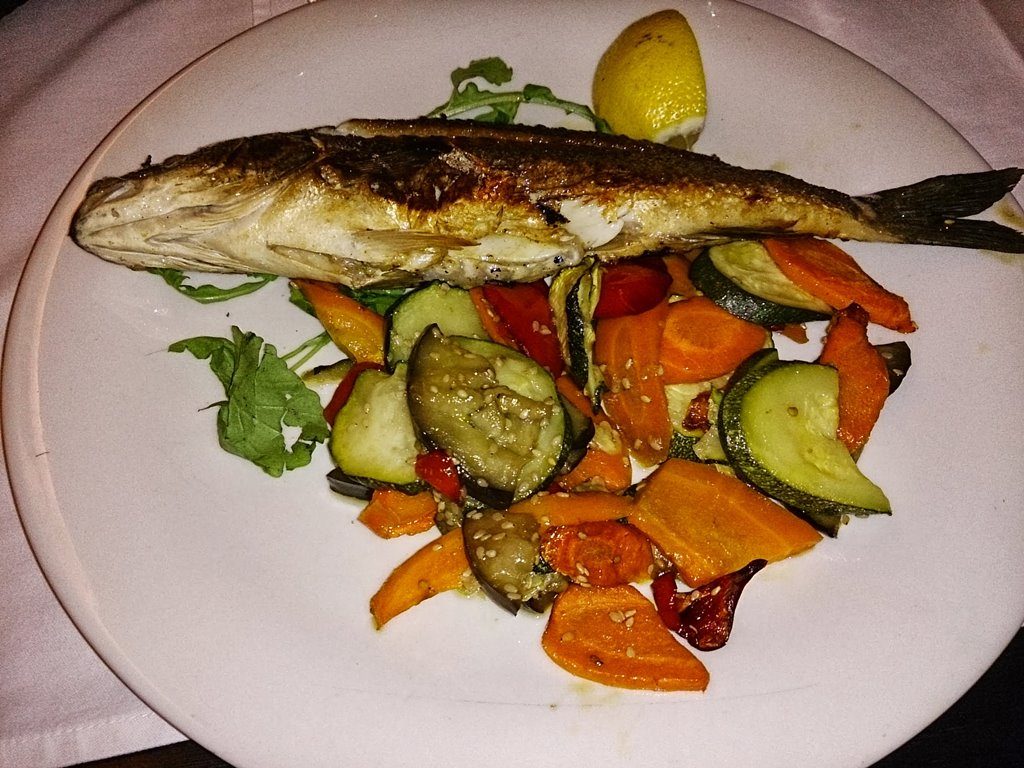
Škarpina (Grooper) – whitefish. Belongs to the Scorpaenidae family. Color is ruddy brown and can grow up to 66 meters and 5 kilograms. The richest hunting grounds are around all the outer islands, isolated islets, and the largest in the area of Zadar and Šibenik islands. When handling precautions should be observed because the spines sting is very painful.
Ugor (Sea eel) – whitefish. Belongs to the Muraenoidei family. His body is a serpent, the tail laterally flattened, and wrapped with a layer of mucus, so it is hard to hand hold. Sea eel is greedy, powerful and agile, he feeds on fish and cephalopods, and devours his own kind of specimens. The color of the upper half of the body is black, dark brown or dark gray, while the lower half becomes brighter. He can grow up to 2.12 centimeters and 48 kilograms. Sea eel is a true benthic fish retained in the holes and crevices, under rocks and algae bored, and moved the sink in each case. Widespread across the Adriatic from shallowest to the deepest areas, mostly on the coasts of Istria, the Kvarner islands and coasts of the island facing the open sea.
Murina (Murra) – whitefish. Belongs to the Muraenoidei family. The basic color is brown or yellowish, covered with dark, irregular spots winding. She can grow up to 1.30 meters and 8 kilograms. The most common is near Hvar and south, and is considered as quite normal fish. She is retained along weedy banks and the marriages of the southern and middle Adriatic. She is very aggressive, and like a snake can swallow a large bite. Her bite is horribly painful, and mucus she is very poisonous.
Kirnja (Dusky serranus) – whitefish. Belongs to the Serranidae family. Color is dark chestnut brown, sometimes almost black. She grows up to 1.40 meters and 100 kilograms. She can be found in the Adriatic sea but in the northern part so rare that it is virtually unknown. The most numerous is in the vicinity of Dubrovnik, a famous hunting area is around Dubrovnik and Mljet, Lastovo, Hvar, Pelješac, Vis and Palagruža.
Kanjac (Comber) – whitefish. Belongs to the Serranidae family. Color is ruddy brown or yellowish brown with transverse bands. He grows up to 34 centimeters and 0.43 kilograms. He can be found in the Adriatic sea up to 200 meters deepth, and is more abundant in the canals than in the open sea. Known hunting areas are around the island of Šibenik and Zadar and the Croatian coast, while in the waters of the southern coast of Istria, and somewhat less frequently. He is very harmful to the settlement lobsters because immature crabs are his main food.
Pirka (Lettered perch) – whitefish. Belongs to the Serranidae family. Her color is ruddy or rosy brown with transitions in the purple and blue with some brown transverse bands. She grows up to 28 centimeters and 0.30 kilograms. Known hunting areas are in the inland canals of central Dalmatia, and widespread across the Adriatic sea, but only along the coastal part regardless of the type of bottom. She is very voracious and aggressive, and is detrimental to the village lobster. Lettered perch is a hermaphrodite.
List (Common sole) – whitefish. Belongs to the Soleidae family. It is pretty large family, of which this particular species is known. He has build a solid body with a highly developed skeleton. He has flattened and asymmetrical body, small eyes and transverse mouth. Tail fin is poorly developed and the common sole is a very bad swimmer. Lives in colonies, but dispersed, and it is very difficult to find because they burrow into the soft seabed. He grows up to 50 centimeters and 1 kilograms, and feeds on crustaceans, worms and fish. His color is gray or brown. He lives on muddy and sandy bottoms along the Adriatic coastline up to 250 meters.
Lumbrak (Crenilabre paon) – whitefish. Belongs to the Labridae family. Males are gray-green with a rosy stripe along the sides and occasionally blue spots, while females are uniformly greenish gray. He grows up to 44 centimeters and 0.75 kilograms. Spread evenly along the coastal of the Adriatic sea, especially along the western coast of Istria. Crenilabre paon is the largest and most widespread fish in the Labridae family.
Knez (Rainbow-wrase) – whitefish. Belongs to the Labridae family. His color is blue-green and the flanks of his orange stripes and blue ribbed black spot. He grows up to 25 centimeters and 0.14 kilograms. He is more numerous with the offshore islands, is widespread along the coastal Adriatic. Keeps on rocky and coral or conchy bottom.
Lastavica (Tub) – whitefish. Belongs to the Triglidae family. The colors are brown and ruddy with the transition to green. Pectoral fins are dark green or dark purple with a blue border. She grows up to 70 centimeters and 4 kilograms. She can be found in the Adriatic sea, usually between 20 and 100 meters deepth, and elected muddy and sandy bottoms. When stretch-to-end releases stertorous sound.
Grdobina (Frogfish) – whitefish. Belongs to the Lophiidae family. Her color is scratch yellow or ashy brown. She grows up to 70 centimeters and 8 kilograms. She lives across the Adriatic sea where the bottom is clean muddy, and the largest in the depths of 40 to 150 meters. She is especially abundant in the channels under the Velebit, Kvarnerić in the area between the mainland and the island of Vis. She is known for a very ugly looking.
Raža (Thornback ray) – sharks and rays. Belongs to the Rajidae family. The main features is the flattened body, cartilager skeleton and position of mouth on the underside of the body. Her color is gray with a variegated black or brown spots, and the underside is white. She looks unsightly, has hard and very rough skin at which the sharp spines and is enveloped by the layer of mucus. She grows up to 1.10 meters and 8 kilograms. She feeds on crustaceans and fish, and have internal fertilization, which allow male sexual organs. When is the bottom cleaner and muddier, it is more densely populated rays. Known hunting areas are in the canals of northern Adriatic sea, Vis and St. Andrija, on the high seas off Dugi otok, between Palagruža and Sušac and southeast of Dubrovnik.
Morska mačka (Catfish) – sharks and rays. Belongs to the Catulidae family. Color is dark gray, mottled with dark brown or black spots. She grows up to 1.20 meters and 7 kilograms. She is found in the Adriatic sea between 40 and 100 meters, a richer hunting grounds are on the northern Adriatic. Her skin is unusually tough and tiny pearl, it is used for wood scraping.
Golub (Sting ray) – sharks and rays. Belongs to the Dasyatidae family. Color is yellow-brown or leaden gray. He grows up to 1.50 meters and 10 kilograms. He lives on muddy and sandy bottoms, and most numerous in the central Adriatic. Sting ray is the most numerous species from all families Dasyatidae.


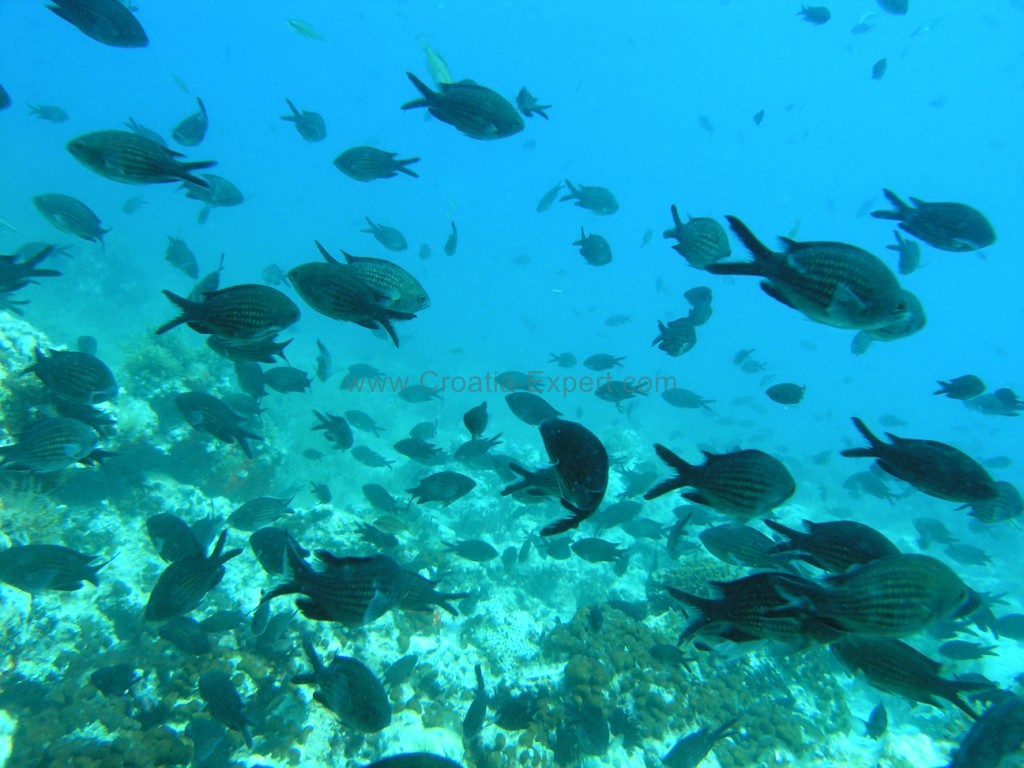
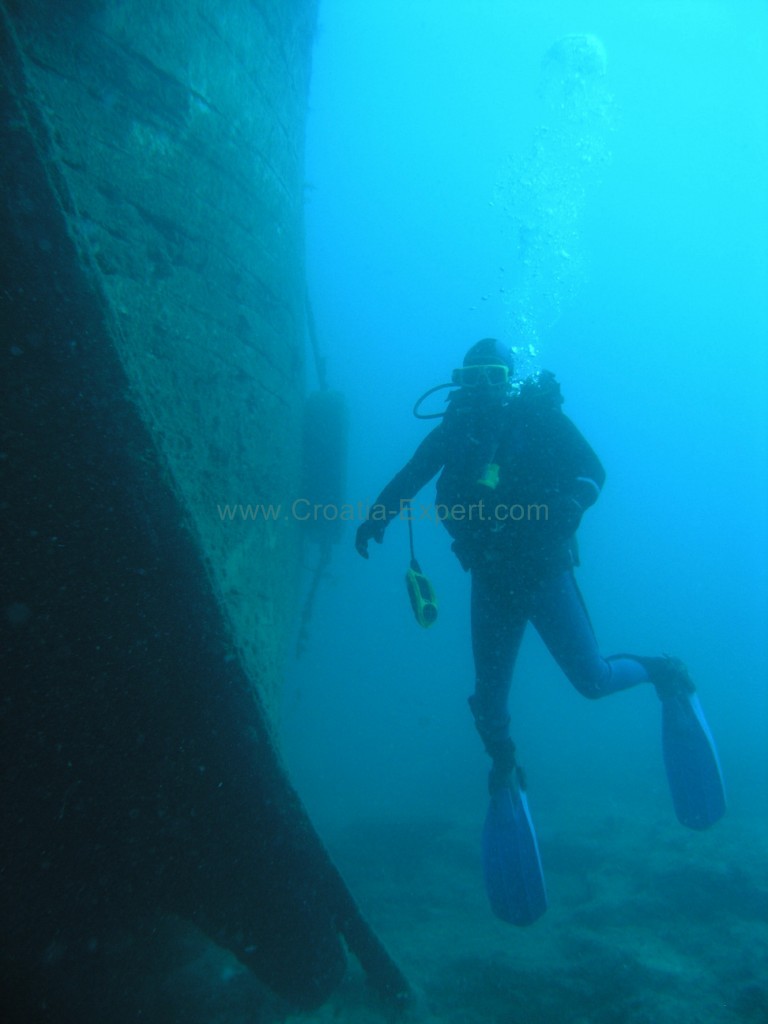
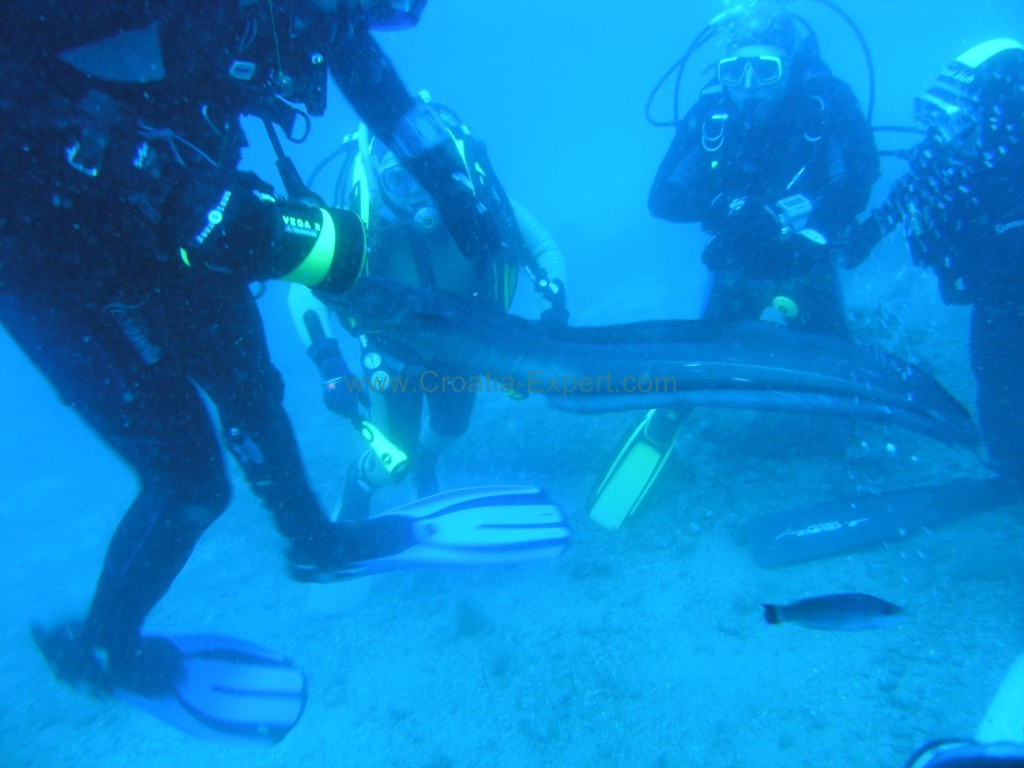
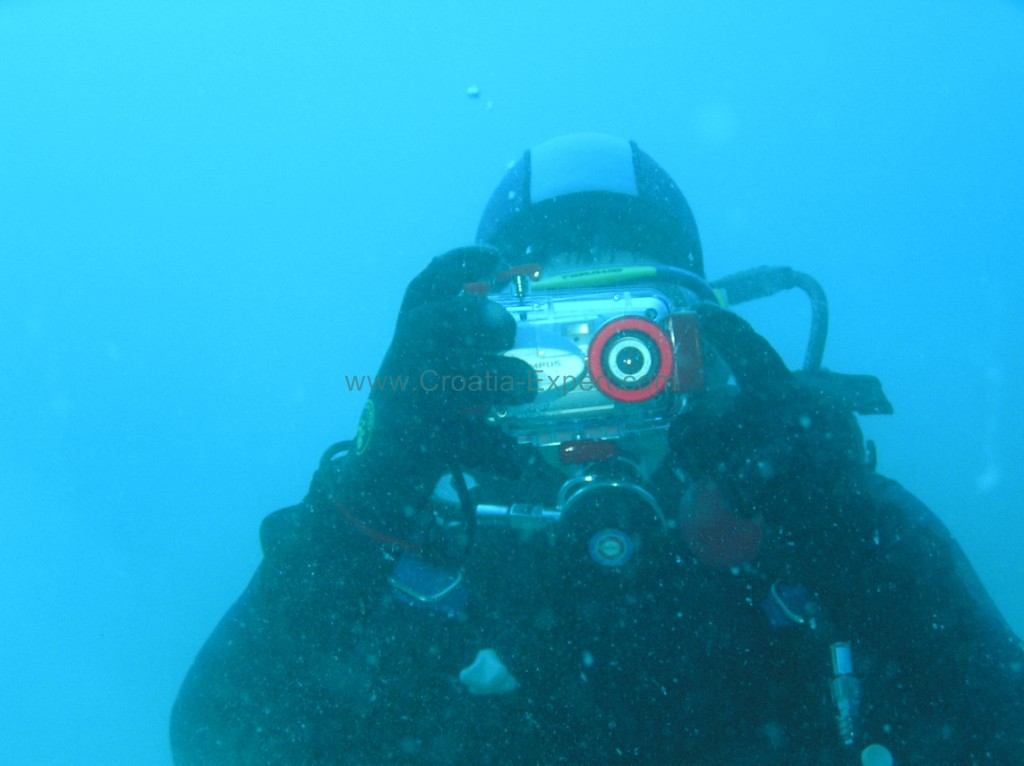

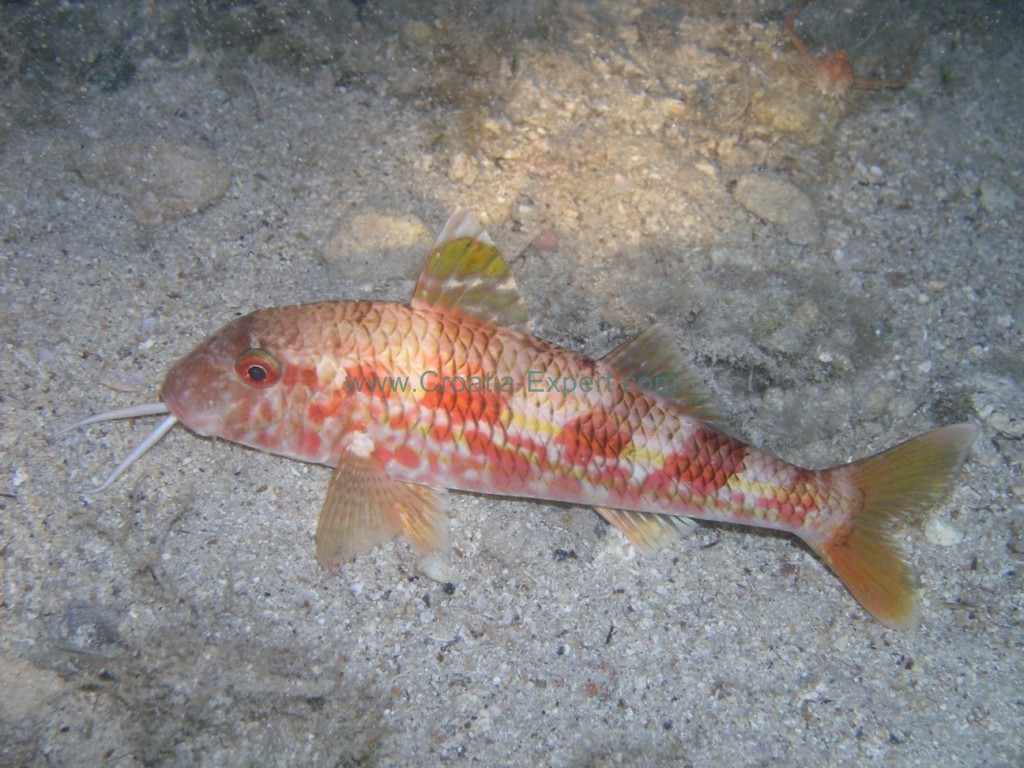
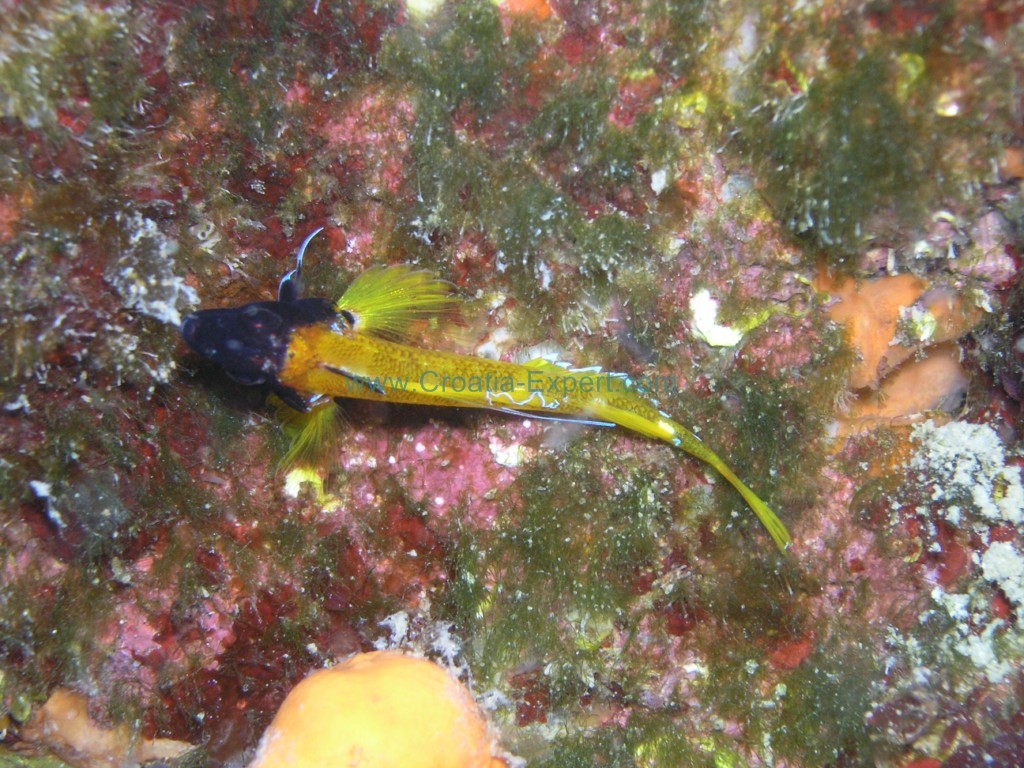
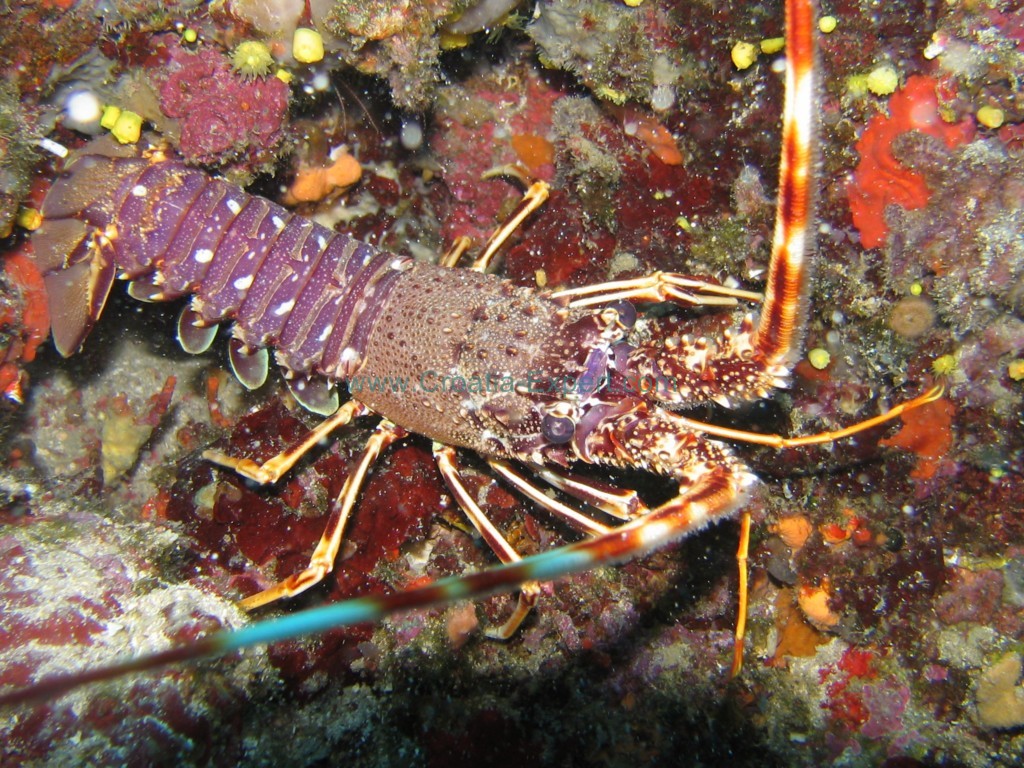
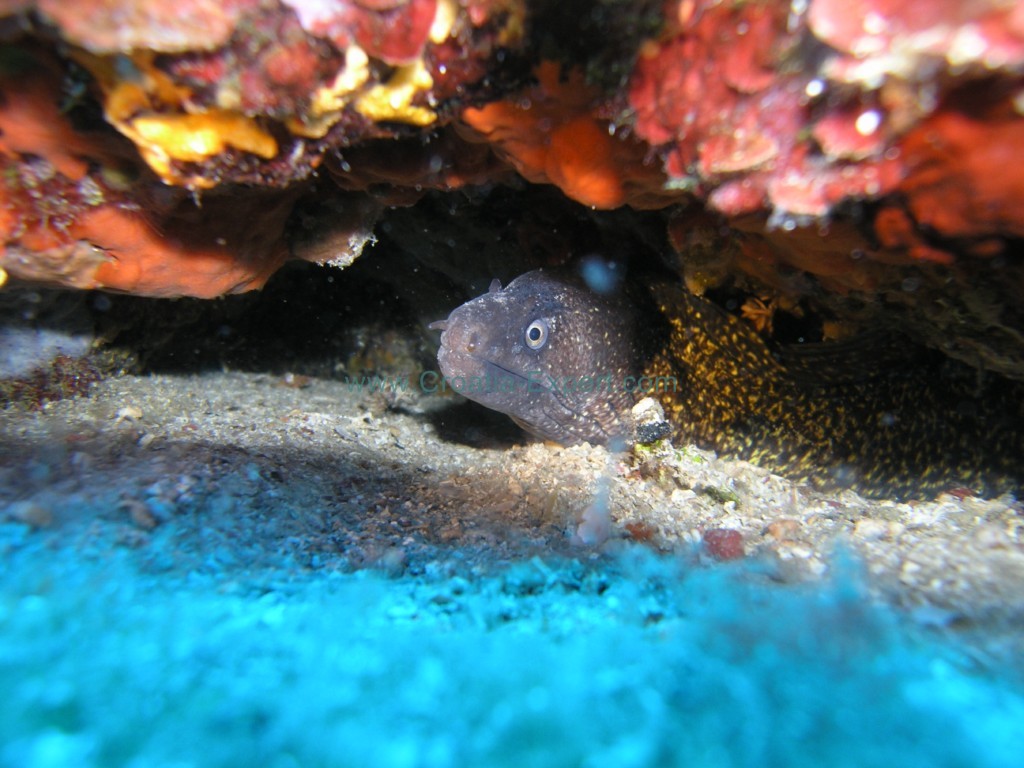
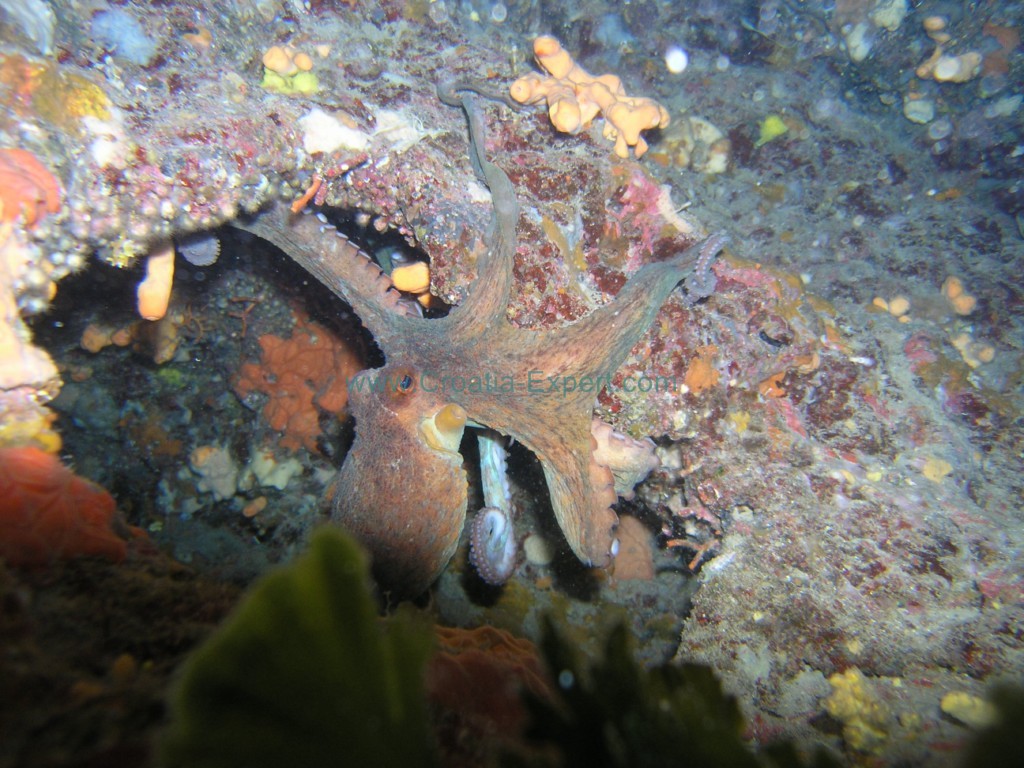
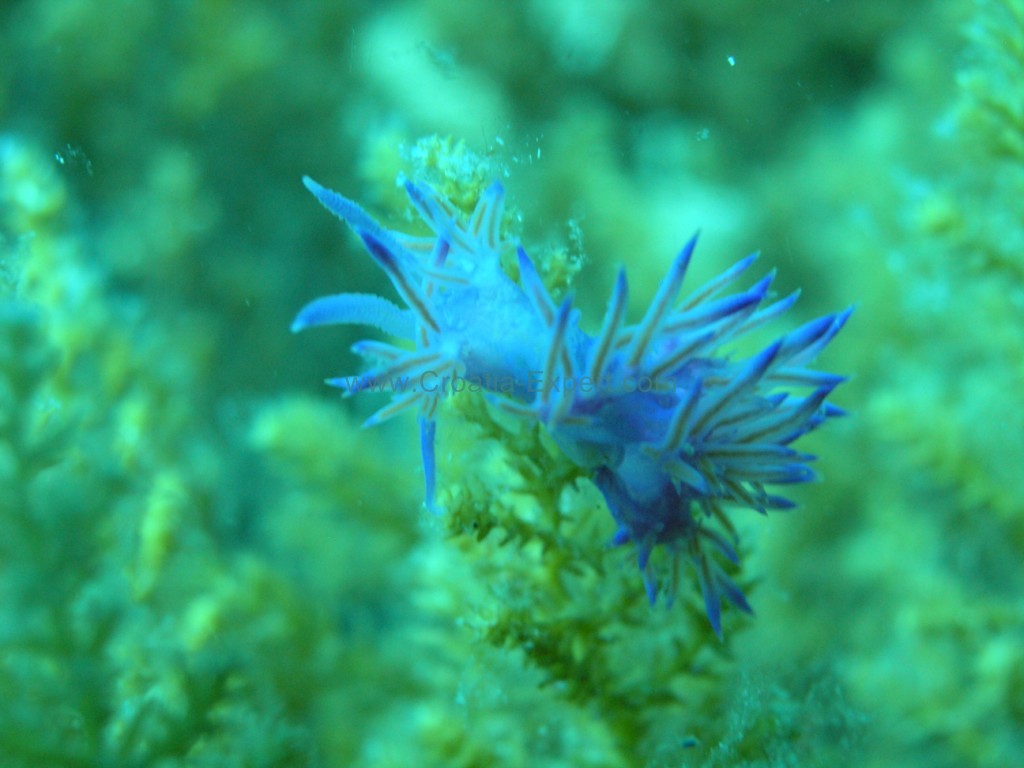
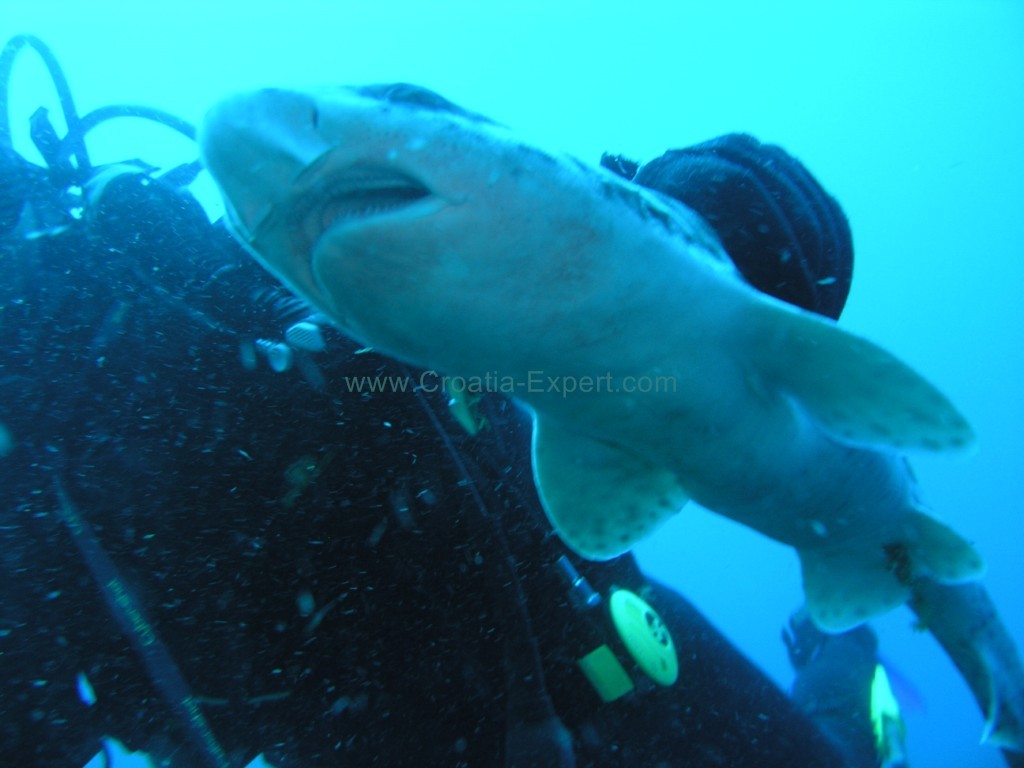
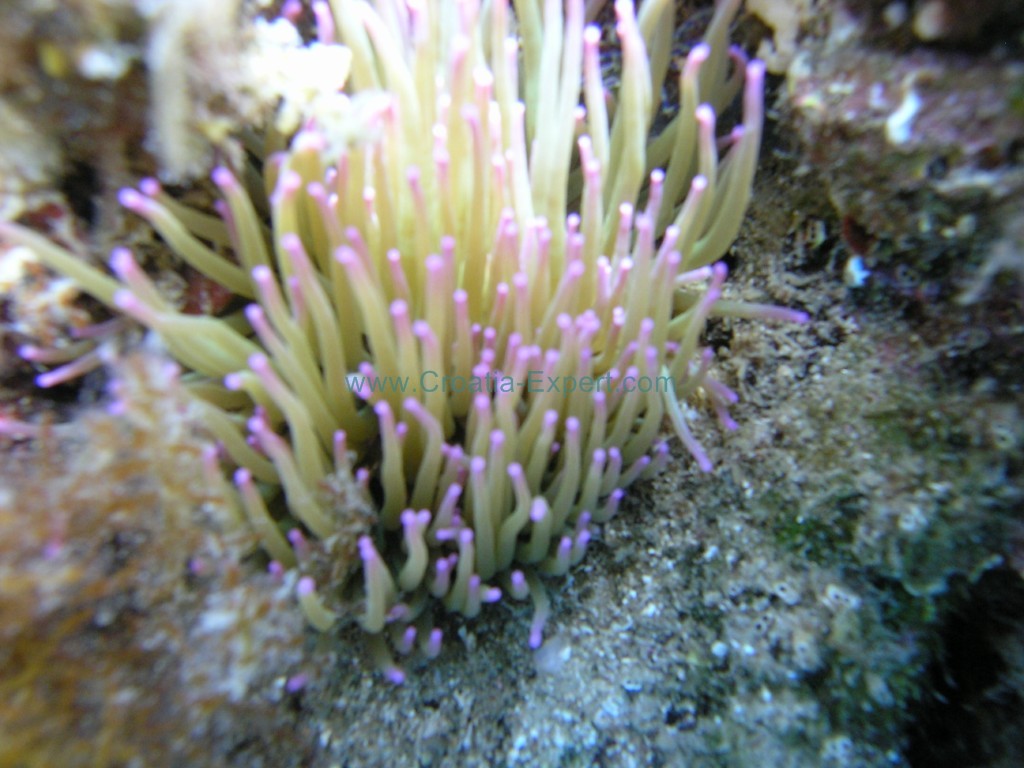
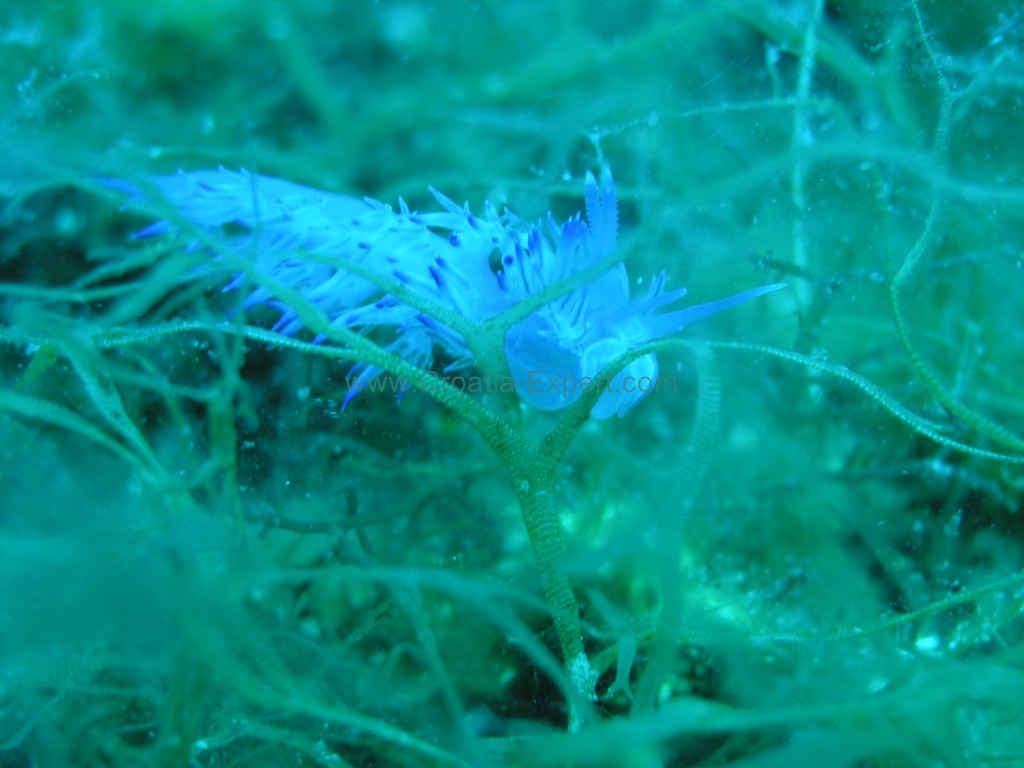
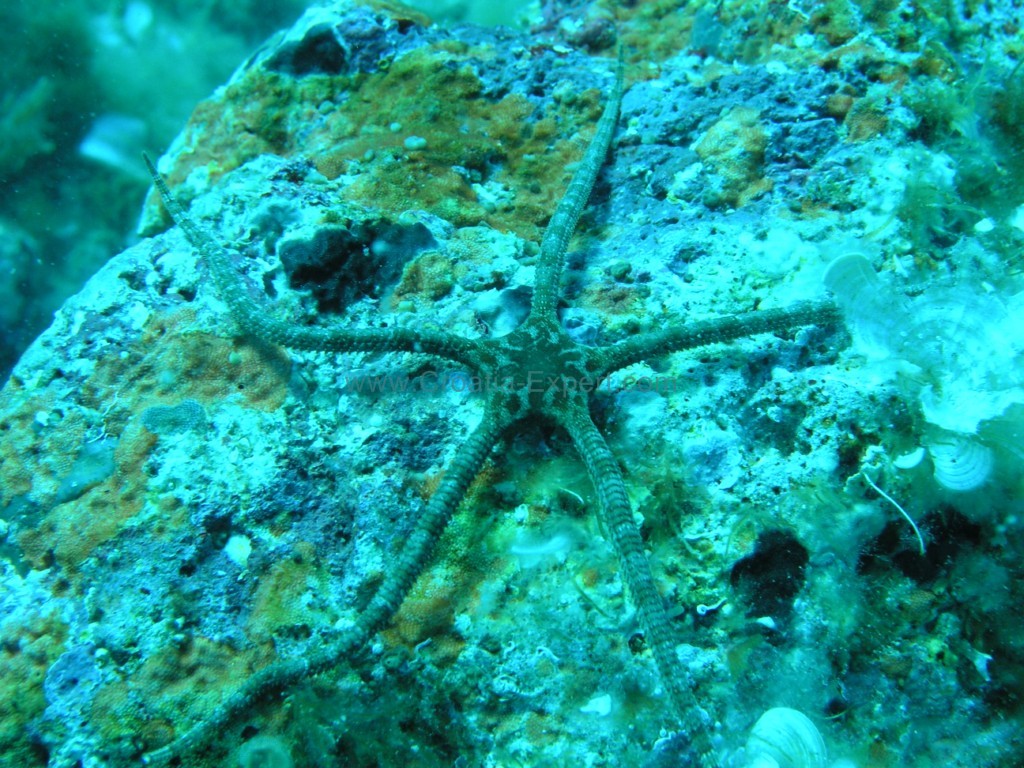
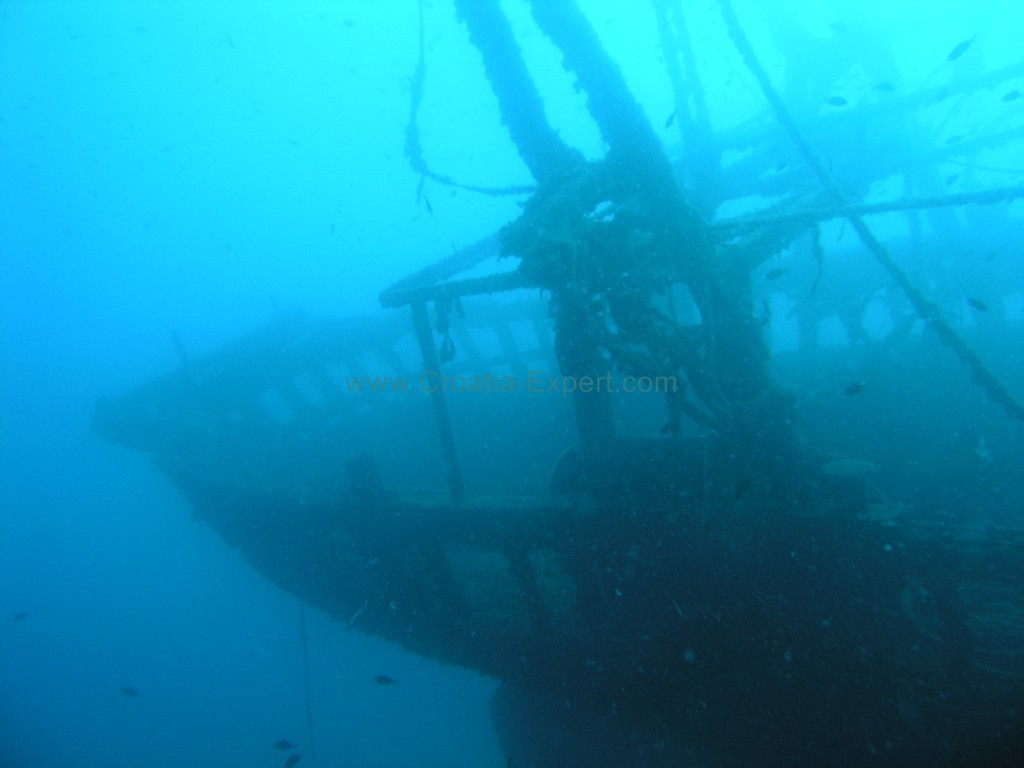
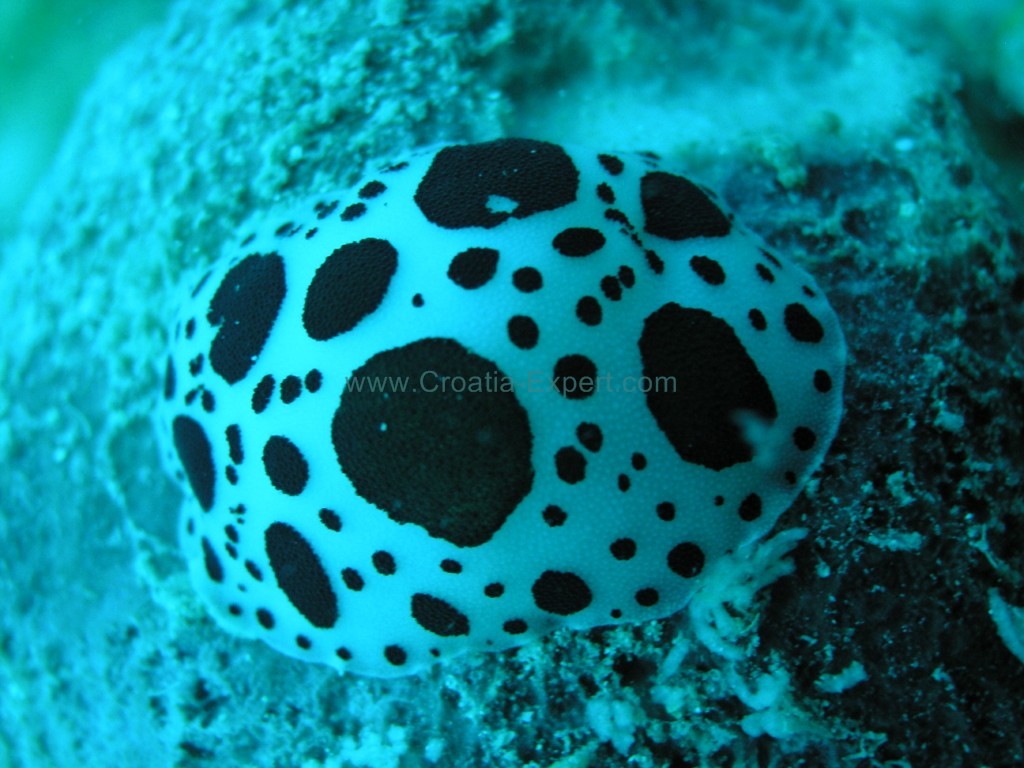
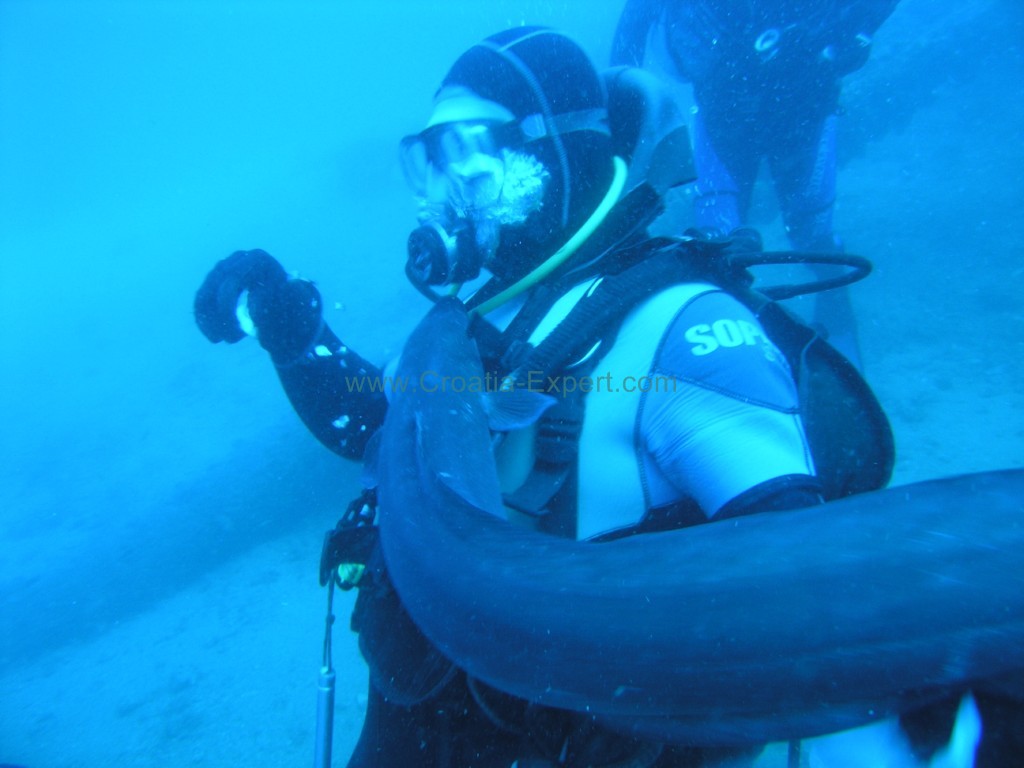
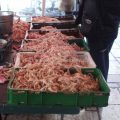
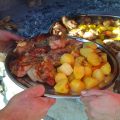
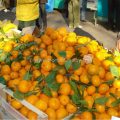
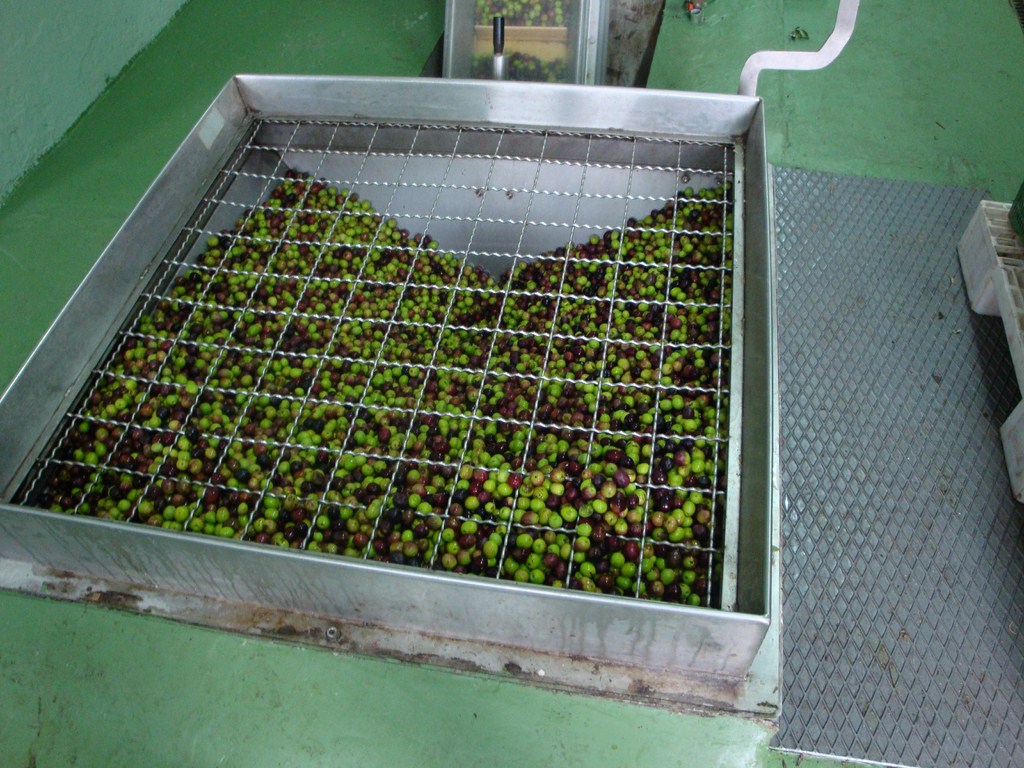
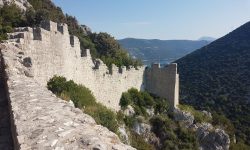


Both sides of my family are originally from the island of Unije. I vaguely recall Mom telling me about the clan nicknames on the island. Karcich was mackerel or Skuša, Radoslovich was pickerel or Gira, or maybe it was vice versa. And maybe it was pike, Štuka, not pickerel. Too bad I didn’t write it down.